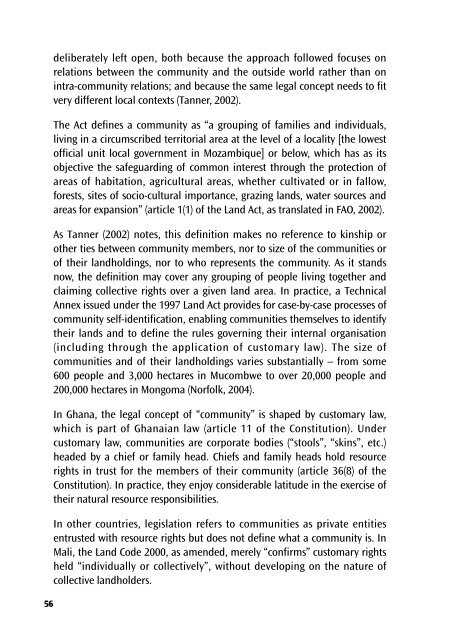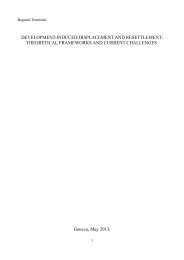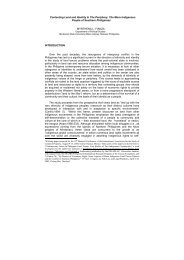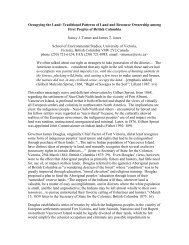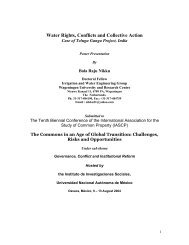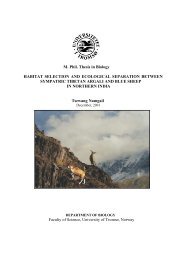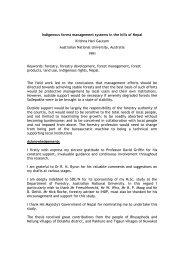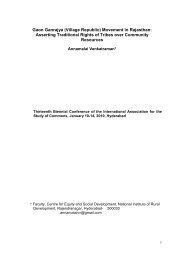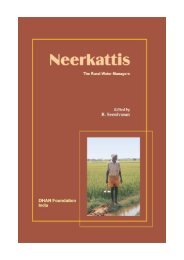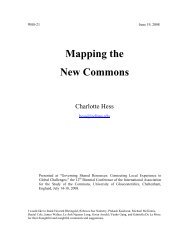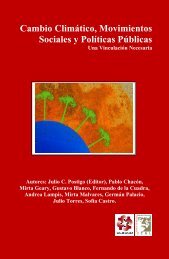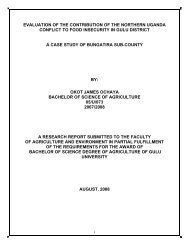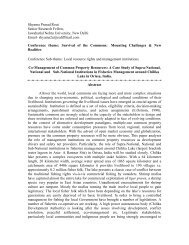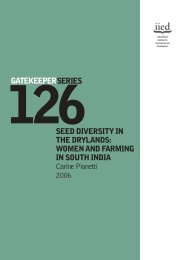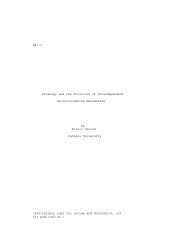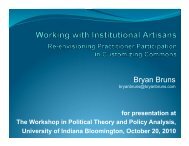Legal empowerment for local resource control
Legal empowerment for local resource control
Legal empowerment for local resource control
Create successful ePaper yourself
Turn your PDF publications into a flip-book with our unique Google optimized e-Paper software.
56<br />
deliberately left open, both because the approach followed focuses on<br />
relations between the community and the outside world rather than on<br />
intra-community relations; and because the same legal concept needs to fit<br />
very different <strong>local</strong> contexts (Tanner, 2002).<br />
The Act defines a community as “a grouping of families and individuals,<br />
living in a circumscribed territorial area at the level of a <strong>local</strong>ity [the lowest<br />
official unit <strong>local</strong> government in Mozambique] or below, which has as its<br />
objective the safeguarding of common interest through the protection of<br />
areas of habitation, agricultural areas, whether cultivated or in fallow,<br />
<strong>for</strong>ests, sites of socio-cultural importance, grazing lands, water sources and<br />
areas <strong>for</strong> expansion” (article 1(1) of the Land Act, as translated in FAO, 2002).<br />
As Tanner (2002) notes, this definition makes no reference to kinship or<br />
other ties between community members, nor to size of the communities or<br />
of their landholdings, nor to who represents the community. As it stands<br />
now, the definition may cover any grouping of people living together and<br />
claiming collective rights over a given land area. In practice, a Technical<br />
Annex issued under the 1997 Land Act provides <strong>for</strong> case-by-case processes of<br />
community self-identification, enabling communities themselves to identify<br />
their lands and to define the rules governing their internal organisation<br />
(including through the application of customary law). The size of<br />
communities and of their landholdings varies substantially – from some<br />
600 people and 3,000 hectares in Mucombwe to over 20,000 people and<br />
200,000 hectares in Mongoma (Norfolk, 2004).<br />
In Ghana, the legal concept of “community” is shaped by customary law,<br />
which is part of Ghanaian law (article 11 of the Constitution). Under<br />
customary law, communities are corporate bodies (“stools”, “skins”, etc.)<br />
headed by a chief or family head. Chiefs and family heads hold <strong>resource</strong><br />
rights in trust <strong>for</strong> the members of their community (article 36(8) of the<br />
Constitution). In practice, they enjoy considerable latitude in the exercise of<br />
their natural <strong>resource</strong> responsibilities.<br />
In other countries, legislation refers to communities as private entities<br />
entrusted with <strong>resource</strong> rights but does not define what a community is. In<br />
Mali, the Land Code 2000, as amended, merely “confirms” customary rights<br />
held “individually or collectively”, without developing on the nature of<br />
collective landholders.


